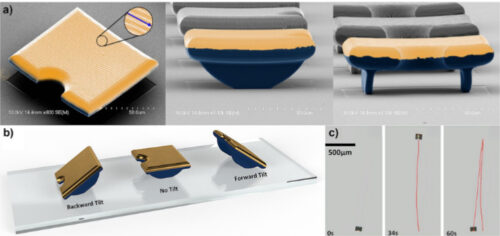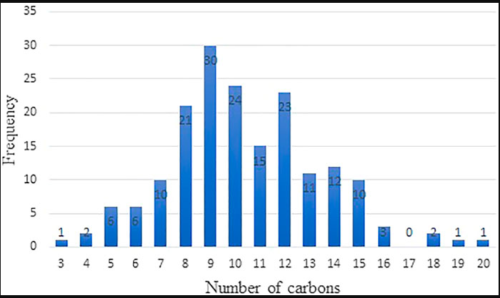2022-04-14 ジョージア工科大学
・この研究は、『Journal of Micro-Bio Robotics』誌に掲載された。
・現在、ほとんどの磁気作動式マイクロボットのシステムでは、完全な制御を可能にするために複数の電磁石を追加する必要があり、その結果、消費電力が高く、設定の自由度が低くなっています。
・マイクロボットの操作が格段に容易になったことで、研究チームはマイクロマニピュレーション機能を実証することができた。
<関連情報>
- https://research.gatech.edu/new-micro-rocker-bots-are-powered-single-electromagnetic-coil
- https://doi.org/10.1007/s12213-022-00149-y
双方向性マイクロスケールロッカーロボット制御による中立位置オフセット Bidirectional microscale rocker robots controlled via neutral position offset
Tony Wang, DeaGyu Kim,Yifan Shi, Zhijian Hao, Azadeh Ansari
Journal of Micro-Bio Robotics Accepted: 23 February 2022
DOI:https://doi.org/10.1007/s12213-022-00149-y

Abstract
The recent advancements in nanoscale 3D printing and microfabrication techniques have reinvigorated research on micro-scale robots (microrobots). However, precise motion control of microrobots using compact actuation/control setups remains challenging to date. This work presents a novel motion direction control mechanism and contact design that enables bidi-rectional steering and object pushing. This is done via biasing the tilt position of the microrobot during stick–slip motion with an out-of-plane magnetic field generated by a single, compact coil. Equipped with rockers to contact the substrate, the microrobot—hence microrocker bot—is capable of well-controlled, selectable, forward, and backward movement given a set orientation. These 100μm × 113μm × 36μm robots were 3D printed via two-photon lithography and subsequently deposited with a 300nm layer of nickel, which determined their magnetization directions based on thin film magnetoelastic anisotropy. Under a static magnetic field, the bot tilts either forward or backward to align its magnetization vectors with the magnetic field lines. Combined with an oscillating magnetic field, the robot undergoes stick–slip motion in the predisposed direction, dictated by the tilt. Experimentally, the robot can travel up to 100μm/s (1 body length per second) forward and backward and demonstrate micromanipulation capabilities. Finally, the robot dynamics is theoretically modeled and validated to analyze the present forces and the stick–slip motion.



